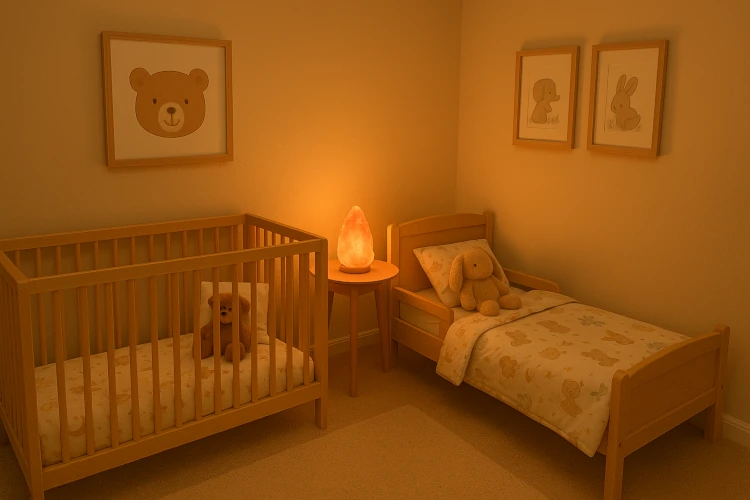Sharing a bedroom can be a wonderful experience for siblings – it strengthens their bond and can bring a sense of security at night. But it also comes with some challenges, especially when it comes to sleep. Here are a few tips to help ensure that both children sleep well and feel comfortable in their shared space:
1. Place the beds as far apart as possible
Ideally, position the beds at a 90-degree angle from each other. This way, each child has their own "zone" within the room and won't be distracted by every little movement or noise from their sibling.

2. Create a personal space for each child
Even in a shared room, it's important for each child to feel like they have their own spot. Decorate a little area above or next to each bed with personal items – maybe a small picture, a favorite stuffed animal shelf, or a mini gallery of their artwork. It helps foster a sense of identity and ownership.

3. Light management is key
The room should be as dark as possible to support restful sleep. If one of the children is afraid of the dark, use a red-toned nightlight, like a Himalayan salt lamp or a low, soft yellow light that doesn't shine directly onto the bed. Avoid bright or colorful projector nightlights, which tend to be stimulating rather than calming.
4. Use a sound machine
A continuous white noise or gentle rain sound can work wonders by blocking out disturbances – whether it's a noisy neighbor, early morning street sounds, or even the other sibling turning in bed. Place the sound machine between the beds but out of reach, and be sure to hide all cables safely.
5. Coordinate bedtime routines
If possible, start the bedtime routine at the same time for both children. This helps create consistency and avoids the risk of one waking the other. If that doesn't work for your family, try putting the younger child to bed first. Once they've really fallen asleep (usually about 30–40 minutes later), bring the older one in for their bedtime.
6. Talk about the transition
If your kids are old enough, talk openly and positively about the upcoming room-sharing arrangement. Let them help with setting up the room, decorating their spaces, and choosing favorite bedtime books or routines. Preparing them emotionally helps ensure a smoother transition and a more peaceful night for everyone.
With a little planning, room sharing can become a cozy, secure experience that your children will remember fondly – and that works well for your family's sleep, too.





